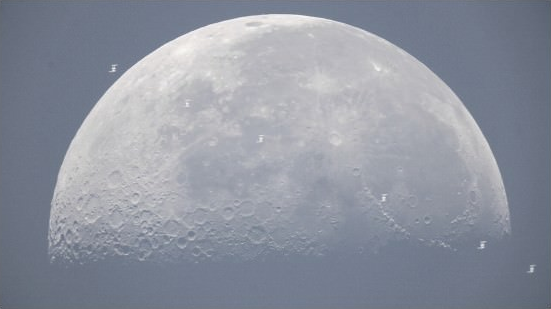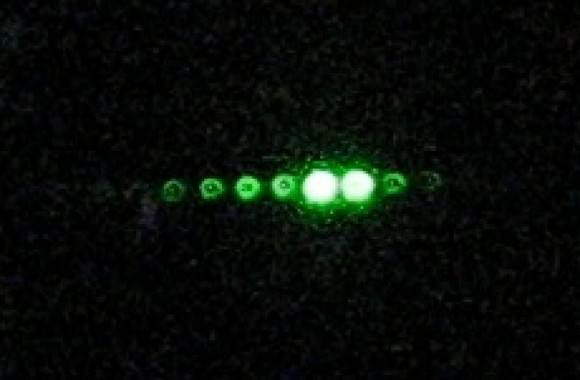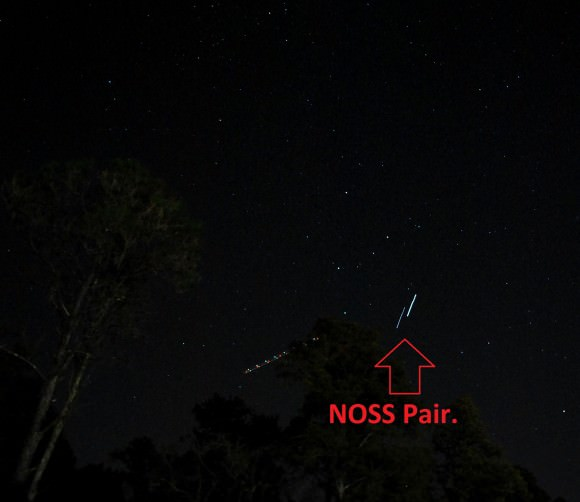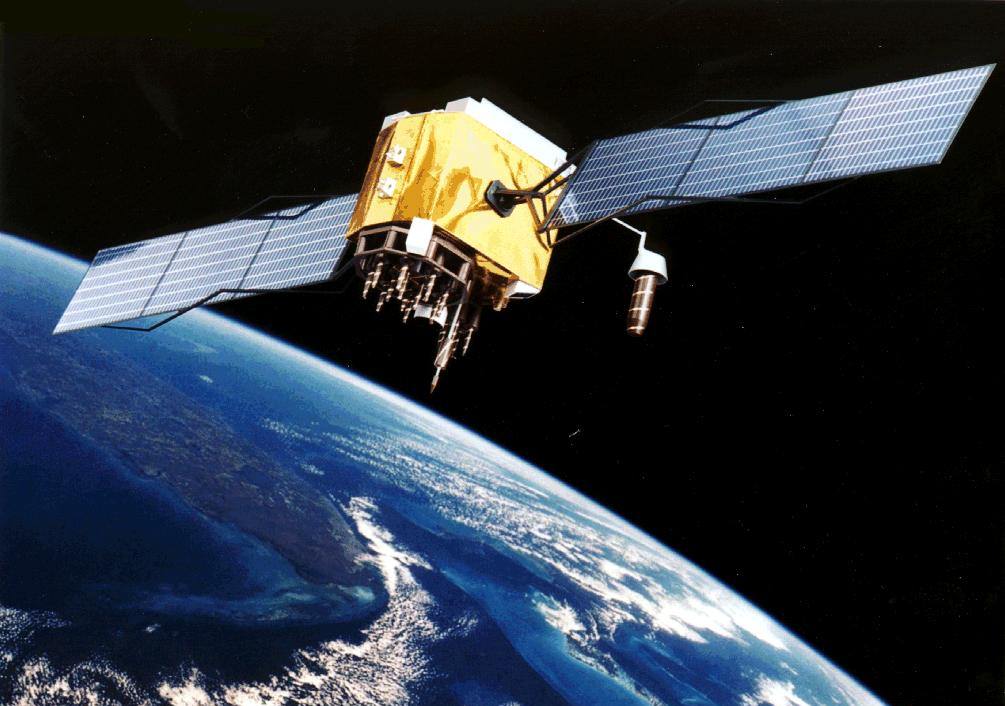Just like our Moon orbits the Earth, many of our artificial satellites also orbit the planet. These satellites are used for communication and imagery by the military and the public and various scientific institutions. Artificial satellites have been in our planetary system since 1957. The first artificial satellite was launched into space by Russia and it was named Sputnik, a beach-ball sized probe. Satellites are launched into space to observe Earth from above or to observe space without the impact of our atmosphere. Their use in our daily lives is significant as weather satellites are used in helping us prepare for any incoming disasters and phone satellites are used to ease communication.
Satellites vary in size and shape. Some are cubes while some are elongated or circular. They range from 10cm to 7 meters depending on their function.
Observing Artificial Satellite
If you observe the night sky with your naked eye, you might be lucky enough to observe a faint line moving in a straight line overhead. Its slow pace indicates that it’s not a meteor and it doesn’t have the characteristic red and green signals that are typical to an airplane. Typically, these are satellites that are placed in low Earth orbit and that is why they are visible to our naked eye. These objects are only a few kilometers above our planet surface and move at a speed of 28,000km/h (17,000 mph). We calculated this speed and it has to be this fast even so Earth’s gravity is pulling them down, their speed ensures they move parallel to the planet’s surface.
Many satellites can be found further away from our planet. These satellites move at a slower pace compared to those placed on Low Earth orbit. These satellites are slow and often follow a geostationary orbit. They can be found at about 37,000 km (23,000 miles) above us. At this distance, they orbit the Earth at the same pace at which the planet rotates.
Satellite watching is pretty common and is a pass time for many amateur astronomers. This activity has been done since Sputnik in 1957. Groups of observers took part in monitoring early launches of satellites in an activity dubbed, Operation Moonwatch.
With new technology and software, observing these satellites has become easier than ever. Apps such as Heaven Above give astronomers a predicted time when a satellite will pass based on the location you enter (in general you’d enter your location).
The time, location, direction, and brightness are key elements to consider when identifying a satellite. With this information already on hand, you won’t need the assistance of advanced technology to help you observe a satellite. In fact, a set of good binoculars will make it easy for you to observe even faint human made satellites.
The key to observing hard to see satellites is using brightness. You’ll need to time these objects and monitor them when they pass near a bright star so they can reflect the light off them. When a satellite reflects our Sun’s light, we call it a Satellite Flare since the reflection is going to be really bright, like a solar flare.
The Biggest Satellite

The biggest satellite is the ISS (International Space Station). It is said to measure 356 feet across and 290 feet in length and has approximately an acre of solar panels. These solar panels reflect light from the Sun, making it easy for astronomers to observe them. The Space Station orbits the Earth about 15.7 times a day and has a speed of 27,700 kilometers per hour. Its wide solar panels make it the brightest man-made object in space. It actually competes with Venus on its brightness. It is 16 times brighter than Sirius, the brightest star in the Solar System. Some astronomers estimate its brightness at a -5 or -6 and during solar “flares” it can get to a magnitude of -8, even brighter than Venus.
Apart from the ISS, there are other satellites that are visible to the naked eye including China’s Tiangong-1 space laboratory and the Hubble Space Telescope.
The best times to view Low Earth Orbit satellites are during the northern summer when the nights are shorter. Low earth orbits can be seen for an extended period including at night. Objects like ISS pass orbit the Earth about every 90 minutes and this allows for astronomers to get several sightings in a day depending on their position on Earth.
ISS is particular has two types of passes due to its incline position to the equator. The first passes from the southwestern part of the sky moving through to the northeast. About 7 to 8 hours later, it is visible in the northwest moving towards the southeast. According to Space.com, the first type of passes will be visible in the morning hours, before sunrise. In July, these passes will be visible after sunset. The second type of passes occur in the early morning and by late July will be visible in the evenings.
Best Time to Observe Artificial Satellite
Also the ISS can even be seen during a clear day, similar to watching any celestial object, it is advisable to choose a clear night sky for observation. The darker the sky is, the better. So it would be advisable to avoid densely populated urban areas, even if you know the estimated time and location when a satellite will pass.
Low earth orbit satellites are easily confused with aircraft, as mentioned earlier. However, to distinguish them, it is important to note that their velocity is constant, unlike airplanes. They also do not have the typical red and green signals seen on airplanes and neither do they leave contrails since they are not in our atmosphere. Due to the fact that they are lit based on their reflectiveness to the Sun, their brightness changes as they move across the sky. They grow dimmer as they move towards the horizon.
Apart from solar flares that can make satellites brighter than usual, there are Iridium flares. The Iridium constellation is home to 66 low earth orbit satellites. These satellites are mainly used for phone coverage. Their antennas are refrigerator-sized and when they catch the glare of the sun, they can flare up and be 40 times brighter than Venus, magnitude -8.
The best times to view satellites are typically a few hours before dawn and a few hours after nightfall.
Satellites found in geostationary orbits are often more difficult to observe since they are further away and typically move slower than Low Earth orbit satellites. Despite this, digital photography has come a long way and you may be able to take images of these objects. They appear as streaks in astrophotos. Speaking of pictures, it is easy to capture satellites such as ISS on camera. To take these pictures, use the same principles used when photographing star trails. The area near and around M42/Orion Nebula is known to have several geostationary satellites. During the March and September equinox seasons, these satellites are shadowed by the Earth making them harder to view and also making communication with geo-stats more difficult.
Free tracking software will help you track where certain satellites are and even run simulations for future viewings.
Cool Satellites to Observe
Some satellites that we recommend that you look out for include:
Cloud-Aerosol LiDAR & Infrared Pathfinder Satellite for Observations (CALIPSO)

You can view this satellite in the afternoon with careful planning through software solutions. NASA publishes expected passes of the CALIPSO so you can plan accordingly.
Here is a comment by the author of the picture on the left:
The hollow nature of the spots is likely due to some spherical aberration in the camera lens coupled with imperfect focus, and is not representative of the laser beam’s optical quality.”
Gregg Hendry
Naval Ocean Surveillance System (NOSS)
This is an interesting watch as the satellite move in groups of 2 or 3. Although these satellites are extremely difficult to sight, it will be interesting trying to find them.

Finding Help On the Internet
The internet is awash with trackers and software to help you track satellites. Knowing their location, size and brightness will get you ahead in observing these artificial celestial objects. It is important to have the necessary information about what you’re observing. You don’t need sophisticated equipment. A set of eyes and a pair of binoculars should be enough to get you started. Knowing when a satellite will pass by a bright star will greatly improve your chances of observing one of these objects. Keep updated on various websites and trackers.
Let us know by commenting below when you’re successful in observing or taking pictures of any of the artifial satellites.

Leave a Reply